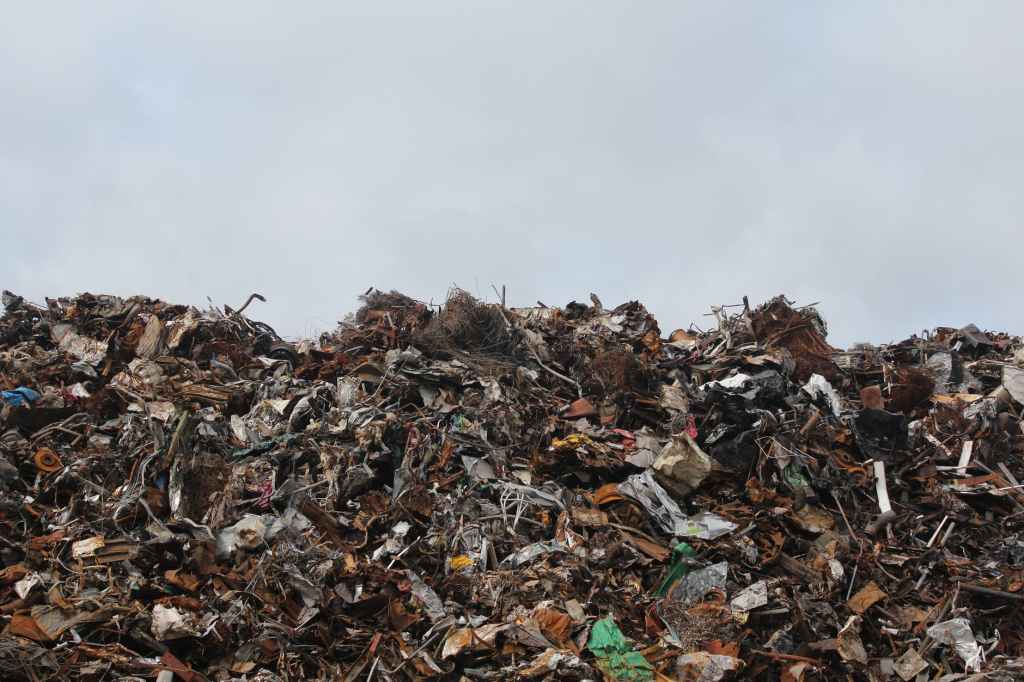Read Time: Estimated 9mins
EVERYBODY FEELS.
Everybody feels. It is not very practical to live in the midst of other humans without taking offence at one thing or other, neither is it possible to live in close quarters with other humans without stepping on each others’ toes. There will certainly be those red moments. But with that established, the question is, how do you react to offence?
Each individual is unique, and will respond differently when someone steps on his toe. There are as many approaches to anger management as there are people on the planet. That doesn’t seem very likely, does it? But then, if we factor in the fact that each person has: different idiosyncrasies; varying backgrounds; myriads of previous experiences; histories of abuse; personal values; personality types, in fact; then it might not seem so unlikely anymore.
Everybody feels. Though some might be able to mask it more than others, or be relatively better at keeping it under the hood, the fact remains that, everybody feels.

Though some might be able to mask it more than others, or be relatively better at keeping it under the hood, the fact remains that, everybody feels.
WHAT DO INCINERATORS HAVE TO DO WITH ANYTHING?
So, what is it that incinerators have to do with our feelings or our responses to offence?
An incinerator is a machine or a set up that is used to get rid of waste, while posing as little danger as possible to life around. That not only includes life in all it’s forms, but also all that contribute to life. It can be large and expensive, on an industrial scale, or local, small-scale affair. It has to be strictly maintained and regulated to ensure it functions as it should.
THE PRE-INCINERATOR ERA.
In the days of yore, during the years of our Lord-knows-when, cities and other settlements had huge dumps where all residents dumped their trash. Out there in the open! In some, they had a monthly ritual where everyone would come together to burn their refuse in one large dump site. No need to maintain or control anything, no need to stress or fret, just dump the trash and light ’em up. Watch the flames lick up the trash and let everyone see.

Back when waste management wasn’t a premium and the systems were far less advanced than they are now, waste was an eyesore, an integral part of the streets. It was so bad you could find a street renamed as Shitesburn Lane or a river rechristened Shitbrook!
Unfortunately, the creative rechristening was just a fraction of the problems. Bigger problems include:
- the soot and smoke that hurt the eyes and lungs of those dumping and burning trash. Not only them, but the relatively innocent bystanders or passers-by, also bear of the brunt.
- the damage it poses to life and the environment. These have accumulated now to the signs of global warming that we see.
- the danger of flying sparks and the possibility of having the fire spreading out of control. Wild fires gone rogue.
- the scorched soil on which the trash is being burnt. Consequently, microbial life in the soil is destroyed, the composition of the soil is ruined, and it could be rendered infertile.
In the long run, it turns out to be more costly to burn refuse out in the open, in more ways than financially.
INCINERATORS TO SAVE THE DAY.
An incinerator is intended to avoid these adverse effects of open air burning. With an incinerator, the refuse can be stored up, sorted, and eventually combusted, with minimal consequences suffered by the environment. With the level of advancement in incinerator designs these days, refuse can be burnt 96% effectively, and that means almost no waste is left behind, not even the soot.
Further, the flue gas that will eventually be released has been treated to remove contaminants and other harmful by-products of combustion. This reduces the risk of global warming and the overall adverse effects on the planets.
Advancement in waste-to-energy technologies is also something to mention. The tremendous amounts of energy(mostly heat) that get produced during the process of combustion, can be converted into useful energy for other processes.

BUT… AT WHAT COST?
In the attempt to prevent hurting life, energy is expended in burning waste effectively. But all that energy must have come from somewhere, and must go somewhere eventually– it’s the First Law of Thermodynamics.
Okay, enough beating about the bush. This is not about managing global warming, though that is essential of course. It isn’t particularly a human behavioral model either. However, the article is about how humans respond to feelings, reactions to offence, how they take having trash dumped on them. Do we act as incinerators, or rather burn the trash in the open air for all to see?
…all that energy must have come from somewhere, and must go somewhere eventually – it’s the First Law of Thermodynamics.
APPROACHING THE POINT: HUMAN REACTIONS TO OFFENCE.
As earlier said, incinerators can be quite expensive to set up and maintain, ranging from the high end industrial scale ones to the Locally Constructed Burn Units. Generally, they serve the same purpose. As you progress, keep these in mind about an incinerator:
- it takes a lot of trash;
- it absorbs tremendous amounts of heat;
- it is choked by smoke/soot;
- it is ladened by the ash in the end;
- it has a threshold.
THE PRE-INCINERATOR MAN: OPEN EXPRESSION OF ANGER.
Open air burning… Well, it does have it’s merits, because at least, it’s cheap and quick and distributes the adverse effects over a wide area so the damage per unit area is relatively less; talk about pressure, ratio of Force to Area.

There are more merits to open expression of feelings, though it is all in context. One thing is, if there’s very little trash to burn, it might be more effective to just dump it out and burn it immediately, instead of storing it up to rot and stink. In this case, it is a relatively light offence and you want to clear if off immediately.
Also, when this pre-incinerator man is offended (or gets trash dumped in or on him), he burns it outside and releases all the heat immediately. The heat is external, and hurts him less.
On the down side, the pre-incinerator man, being the man who openly expresses feelings of anger and others, doesn’t mind who takes the heat or who gets hurt by the smoke. His reactions to offence are explosive. He is so loud, verbose, and aggressive that people in offices down the hall or neighbours five blocks away know what the problem is. They have to endure the noise, they bear in the pain of the offended.
As it turns out though, people who do openly express feelings actually tend to be healthier because when negative feelings are converted into words, the activity of the amygdala(centre for emotion/decision making in the brain) decreases, and the work load is shifted more to the cerebrum(centre for speech/intelligence generally).
But what about the people at the receiving end of those ‘expressions?’ Of course, others around partake in absorbing the heat, willingly or not: talk about the furniture that gets broken, the neighbor whose sleep is interrupted, the unknowing cashier at the supermarket who gets a retort, the dog that spends the night hungry, the kid or parent that gets a glare, the lover that gets a cold shoulder… and the list could go on.
…openly expresses feelings of anger and others, doesn’t mind who takes the heat or who gets hurt by the smoke. His reactions to offence are explosive. He is so loud, verbose, and aggressive…
But it really is not so much of a wonder because emotions are such a big limitation to human reasoning. At the peak of that heat of the fire, rationality dips, and consideration for other humans is not a premium.
THE INCINERATOR MAN: INTERNALIZING ANGER AND OTHER FEELINGS.
But the incinerator man? The incinerator man takes the trash, like the incinerator, dumbly. He internalizes all the feelings, and the trashmaster(the person who caused the offence) mightn’t even realize how much refuse has been dumped in.
The incinerator man is an automated machine. He combusts the trash and takes the heat and soot without complaint, and finds a way to empty the ash if he can help it. Nobody has to know what has happened. Nobody has to feel any of the heat, except the incinerator man himself. Nobody has to know what the offence is, many-a-times even the one that has caused the ‘hurt’ is not aware.
But there is a big downside to this, which is in contrast to the open expression of anger. By storing the trash, it has time to rot and fester. Each time you take out the memory of the wrong done to you, you see it under different lights, and it seems more grievous than the last time you considered it. The trash has rotted further and stinks worse than the last time. And that stench wafts up to your nostrils each time you see the party who has caused you offence, and you are immensely biased towards them.
However, sometimes, the trash can rot till there is nothing left of it. It all goes away, dies off naturally, and you are no longer disturbed by it.
Nobody has to know what has happened. Nobody has to feel any of the heat, except the incinerator man himself. Nobody has to know what the offence is, many-a-times even the one that has caused the ‘hurt’ is not aware.
“INCINERATOR MAN, IT’S NOT A SUPERPOWER.”
As for the Incinerator man, he might deem it a superpower to be able to combust everything without letting out any heat or smoke. Effectively shielding others from having to bear the heat of his anger and the rot of his hurt might seem to him a noble act, the ‘matured’ thing to do. And maybe it is. But there is a problem here.
Remember there is a threshold for what the incinerator can take. When he has burned so much inside, eventually, from all the heat, the lining inside the incinerator gets damaged. When that lining is all burned up, the incinerator itself begins to burn.

Did you know people who internalize negative feelings (anger is an obvious example here) can get sick because of it? Here are a few symptoms of internalizing anger. They could get acute pharyngitis(big name, uh?), not to talk of the constant fatigue due to the energy being expended on the ‘burning’, then the internalized anger depression that comes with the constant negative thoughts that tend to pervade the mind of such a person. His thoughts become very much jumbled-up.
Again, it is medically proven that keeping emotions bottled in induces secretion of stress hormones, adrenaline, cortisol, etc, increasing proneness to infections and cardiovascular diseases! These are only some of the dangerous effects of internalizing anger.A Licensed Psychologist, Audrey Luke, has something to say about “What Happens When You Bottle up Your Emotions.”
…there is a threshold for what the incinerator can take. When he has burned so much inside, eventually… the incinerator itself begins to burn
So, hey there, Incinerator man, are you happy now? See where your superpowers are leading you.
MIDDLE GROUND: HEALTHY EXPRESSION.
Now, you’re asking, hey, if I can’t burn out in the open and I can’t use an incinerator instead, what else do I do, dump the trash in the river? No! Don’t do that. The river will block up and back up eventually. It will overflow its banks and bring with it all the trash that has been dumped in. And this time, it’s going to look messier, mangled up, decaying, bringing with it thick layers of fungus.
So what do I do? Well,
- hit a ball,
- write or sing it out(some of the best works of art, poetry for example, come at the peak of feelings or emotions),
- draw or paint,
- verbalize,
- gestalt,
- talk calmly with the other party – in fact, the place of dialogue in conflict resolution cannot be overemphasized. Many-a-times, offence can be traced back to miscommunication, misunderstanding and misinterpretation of words, sentences, intentions or their connotations.
Channel the energy, don’t leave it in, don’t throw it on someone else. Just channel it into something worthwhile. Convert the waste to energy. If you want to, you could go full anger management. There are the options of anger management therapies or anger management exercises.
TRASHMASTERS BEWARE: YOU MIGHT BE HURTHING SOMEONE WITHOUT REALIZING IT.
Hey, trashmaster. You’re the chief of sarcasm, you’re the one who knows how to hit below the belt, you are the one who doesn’t look back one time to see the results of a chain of events you’ve set in place. Beware.
If everyone expressed their feelings openly, you know, if you dumped that trash and you saw the flare of fire and felt the explosive heat of it immediately, if you wronged someone and got a reaction almost instantly, it would have been better.
But there are incinerators! What if you keep ‘wronging’ a person and get no reaction, none at all? Well, careful, you’ve been dumping trash in an incinerator. That incinerator is burning up. If you don’t watch it, the incinerator is going to burn out, then all the bottled heat is going to boom out and lick you up. And that’s not even all! All that stored up ash and soot is going to choke you.
But by then, it would be too late.
…if you keep ‘wronging’ a person and get no reaction, none at all? Well, careful, you’ve been dumping trash in an incinerator.
SO WHAT ARE YOU?
Which class do you belong to: open air burner or incinerator?

